Click Here to View This Page on Production Frontend
Click Here to Export Node Content
Click Here to View Printer-Friendly Version (Raw Backend)
Note: front-end display has links to styled print versions.
Content Node ID: 405042
The cabin completions and refurbishment business was already reeling before the onset of Covid-19, suffering from economic doldrums and the grounding of the Boeing BBJ Max. After suspending operations up and down the supply chain to gather information and formulate and institute mitigation procedures with wartime vigor and speed, the industry roared back to life amidst the pandemic--induced lockdown. Facilities filled as owners used downtime for cabin and maintenance work. An ongoing wave of first-time buyers sought refurbishments, as executive airliner owners began to step up to new-generation ACJs and BBJs or upgrade their current rides, bringing completion centers to capacity. And the Max returned to service last December, capping a remarkable turnaround year. This year shows no signs of slowing down.
At the Completion Centers
Greenpoint Technologies capped 2020 with a BBJ 787-8 delivery, and the pioneering Boeing completions specialist is awaiting induction of a green BBJ Max 8 at its Moses Lake, Washington, facility. (Currently having auxiliary fuel tanks installed, Greenpoint said.) Could the Boeings there soon share hangar space with Airbus platforms? New CEO Klaus Koester and parent company (as of 2018) Safran have long relationships with Airbus, and Greenpoint is “working with multiple Airbus clients” now, senior director of sales Chad Thorne told AIN, adding, “Greenpoint would be honored to become an Airbus authorized completion center.”
The recently delivered 787-8 Dreamliner, designed in collaboration with the client’s representatives, features open, multi-functional living spaces and distinct, private rooms. This marks the fourth Boeing 787 completion, with two more under contract.
For the Max interiors, Greenpoint has been creating traditional cabin designs with progressive technology. Though interior design details can’t be shared due to non-disclosure agreements, “It’s designed to be the client’s digital concierge,” said design director Annika Svore Wicklund, and borrows elements from Greenpoint’s Ascend narrowbody cabin concept. This features an interior that proactively responds to requests through reliable gesture and voice controls, with technology concealed inside bespoke cabinetry and natural materials. The interface “maintains a relatable and timeless interior aesthetic, and is as natural and intuitive as communicating with a friend across the room,” Wicklund said. Transparent OLED displays expand across the windows, showcasing a serene nature scene, and celestial-inspired valance panels with embedded lighting illuminate as guests move throughout the cabin.
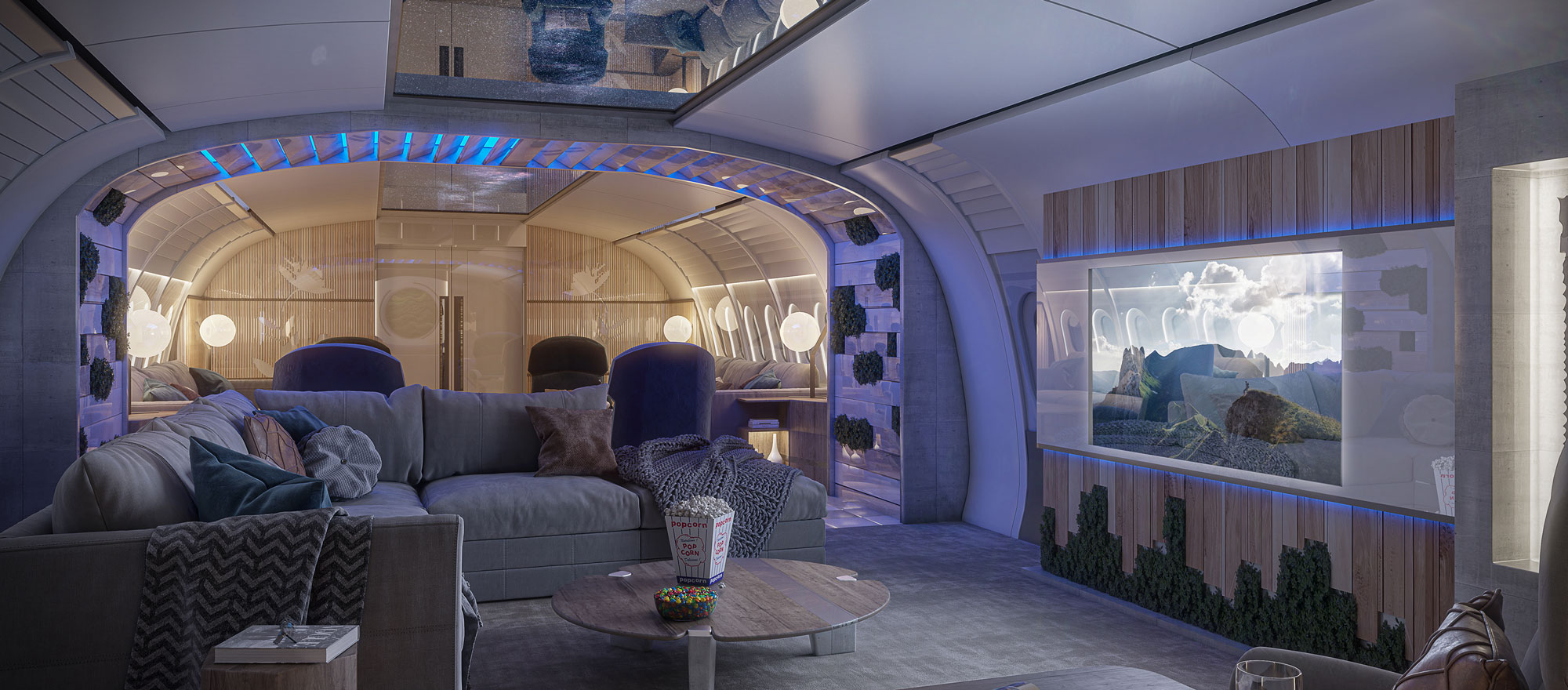
Overall, said Wicklund, Greenpoint sees a customer “shift in focus to health and wellness, including a touchless cabin experience, increased humidification, noise reduction, steam showers, dedicated gyms, and anti-microbial material finishes.” Additionally, “We have witnessed the desire to connect with nature,” as seen in its Affinity widebody concept, which uses biophilic design incorporating organic, sustainable design elements, balancing “sustainable design with innovative technology.” The Affinity cabin incorporates natural elements from organic materials and live green feature walls that display nature scenes on expansive OLED displays, complemented by lighting aligned with circadian rhythms.
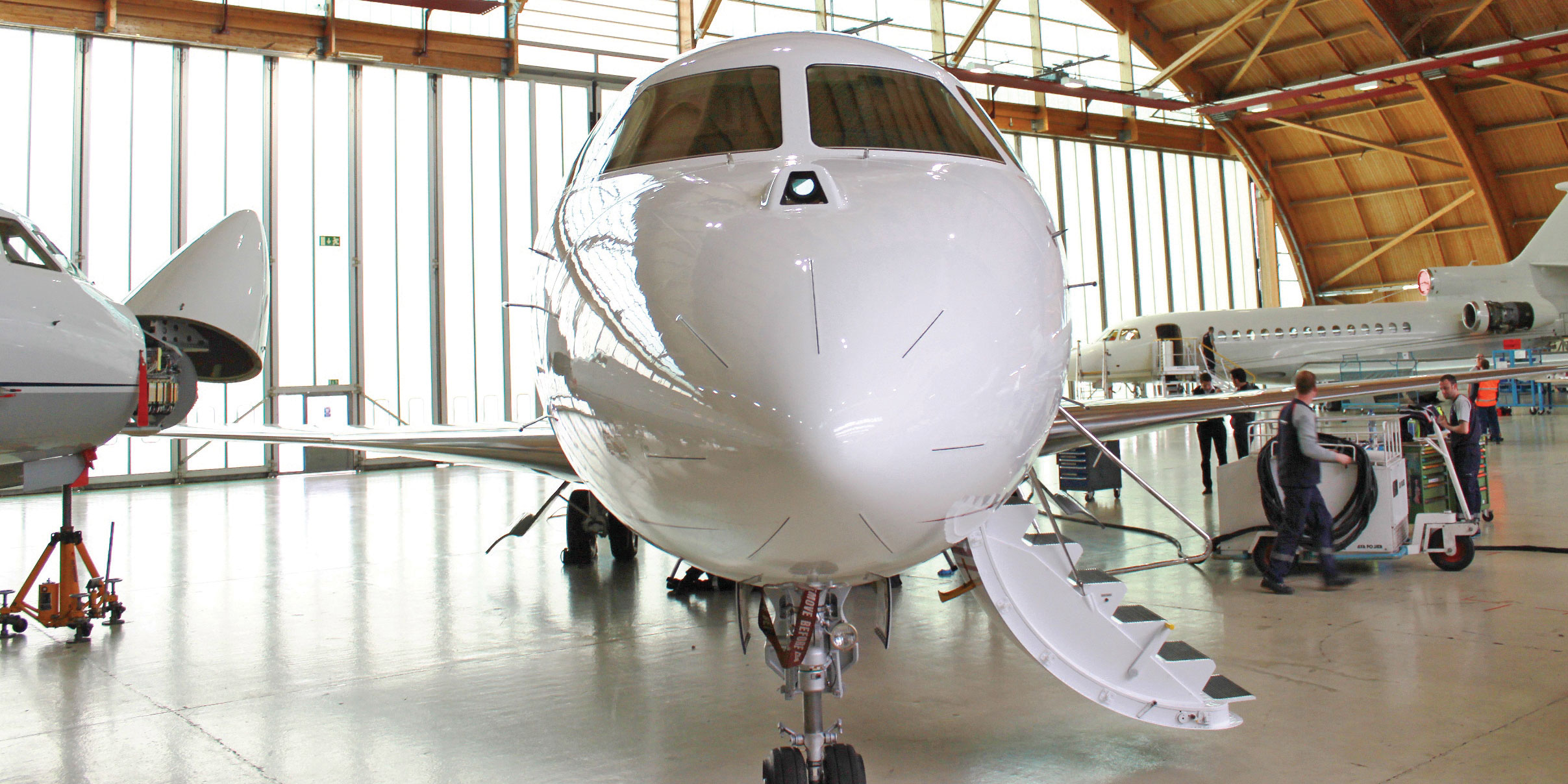
Jet Aviation delivered in May the first BBJ Max, its VIP cabin exuding “a cozy home-like” interior, designed in-house for an undisclosed customer, said Jeremie Caillet, vice-president, VIP completion programs. The Basel, Switzerland-based company anticipates the model’s return will spark an industry uptick. “When new-generation models come to market, we see a surge of interest” in new and aftermarket completions, Caillet said, citing the BBJ 787 and ACJneo in recent years. “Hopefully we’ll see the same with the [BBJ] Max, now that it’s back online.”
The Jet Aviation engineering team designed a stronger interface connecting the interior to the airframe to accommodate the Max’s 16 g certification, up from the 737 classic’s 9 g interior.
Design-wise, he said, “We’re seeing a trend toward an environment that is tranquil and peaceful,” rather than the “technological ‘gimmicks’ that have probably been prevalent” in recent interiors. “It still has that technology, but it sits behind this peaceful tranquility.”
Jet Aviation also delivered a trio of ACJ320 series jets (a classic and two neos), one featuring “the quietest cabin we ever delivered,” said Caillet. The company performs acoustic analysis of incoming green aircraft before induction, he said, “with our proprietary equipment and technology to map exactly where the sound will be invading in the cabin. Then we apply our new technologies and new soundproofing materials exactly where they should be.” Jet Aviation also avails itself to sister company Gulfstream Aerospace’s acoustic labs in its quest for quietness.
Four projects (three for returning customers) are in Jet Aviation’s Basel completion center now: an ACJ319 and 320 and a BBJ 787 and 777. Concurrently, Jet Aviation is receiving a “significant” level of requests for proposals for both widebody and narrowbody cabin projects from head of state and high net worth individuals, said Caillet.
In July, Jet Aviation opened a new production center at its Basel base, integrating all its production activities in one central location, greatly enhancing efficiencies, the company said.
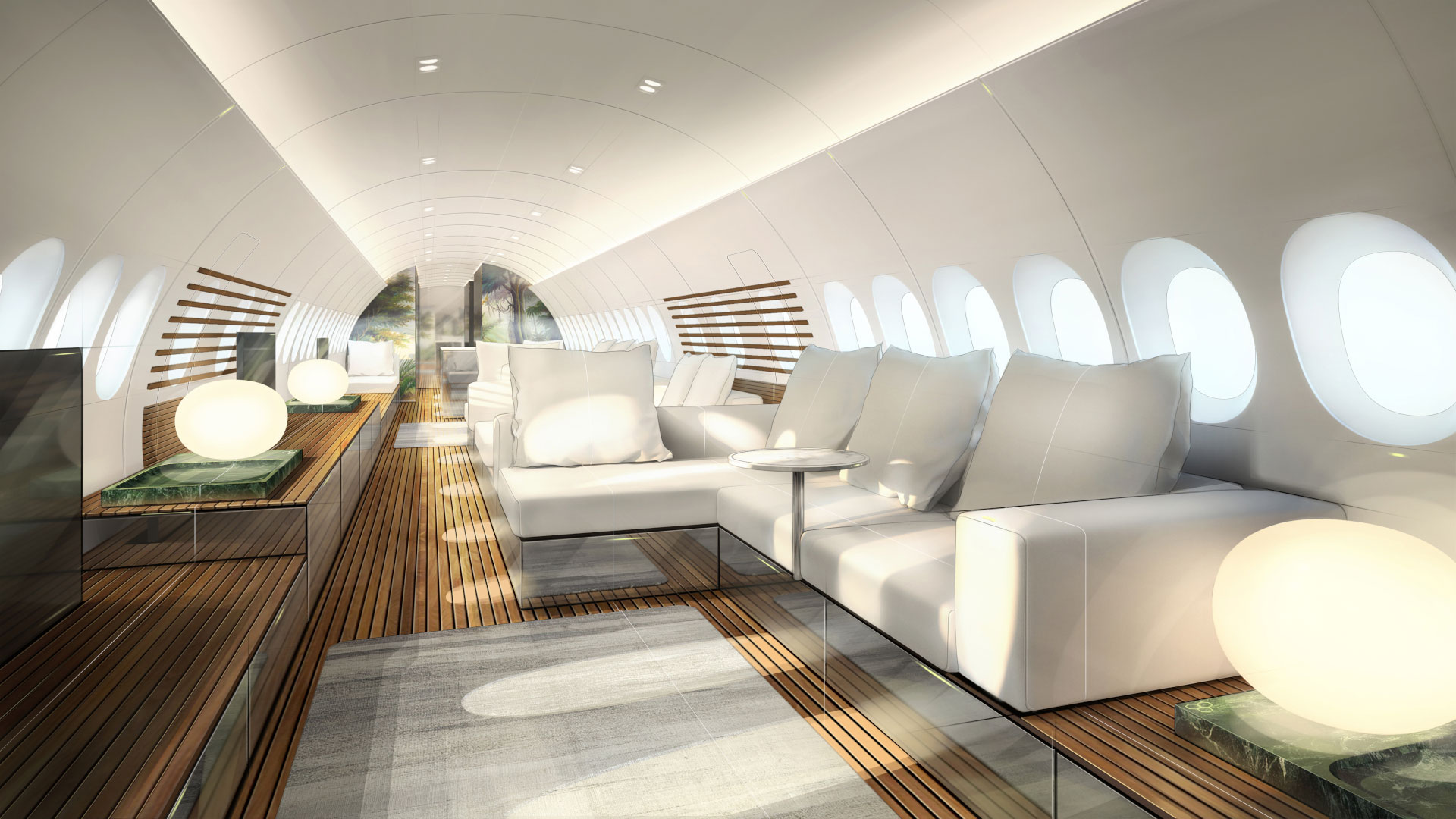
Lufthansa Technik (LHT) had “one of best years in history” in 2020, and this year “seems similar,” said Wieland Timm, vice-president sales, VIP, and special mission aircraft at the Hamburg, Germany—based MRO. With return of the Max, LHT has fielded many requests for completion proposals, starting in the second quarter.
More widebody than narrowbody refurbishments are now underway, a reversal of the usual balance. “The widebodies’ owners chose to upgrade their current aircraft rather than replace them with a new model,” said Timm. With many aircraft having 10-year-old cabins, new cabin management systems (CMS) and in-flight entertainment (IFE) systems are among the most common upgrade requests.
Several customers are also adding bionic air filtration systems to their current aircraft, as well as anti-microbial surface treatments. Requests for directional infrared counter measures defensive systems are also common, especially on larger aircraft. Previously, demand for such systems was “mostly for head-of-state [aircraft], but now demand is coming from beyond,” Timm reported.
Another major trend: a reduction in the number of onboard monitors, in conjunction with growing demand among owners for “a cinema room with tremendous monitors” of up to 110 inches and with curved screens, said Timm. “This is the future.”
Long-term financial considerations tend to dominate interiors choices. “Most [owners] are focusing on resale value,” he said, “whether using primarily for their own or for dedicated on-demand chartering to get revenue back.” LHT also offers aftermarket solutions for owners who want to modify their LHT cabins for the charter market, without changing the configuration.
Meanwhile, total VIP conversion of a trio of A350s for the German government is proceeding sequentially. The government cabin furnishings are very similar to those in high-end corporate VIP cabins, sans the special woods, gold inlays, and other custom touches some such cabins incorporate, with a focus instead on functional elements. The first of the government’s new generation Xtra widebodies is now flying with an interim cabin, to meet near-term lift needs, and LHT is installing a complete VIP cabin on the second, scheduled for delivery next year. The third A350 refurb will follow immediately, and after its delivery, the interim cabin on the first of the trio will be replaced with a full VIP interior.
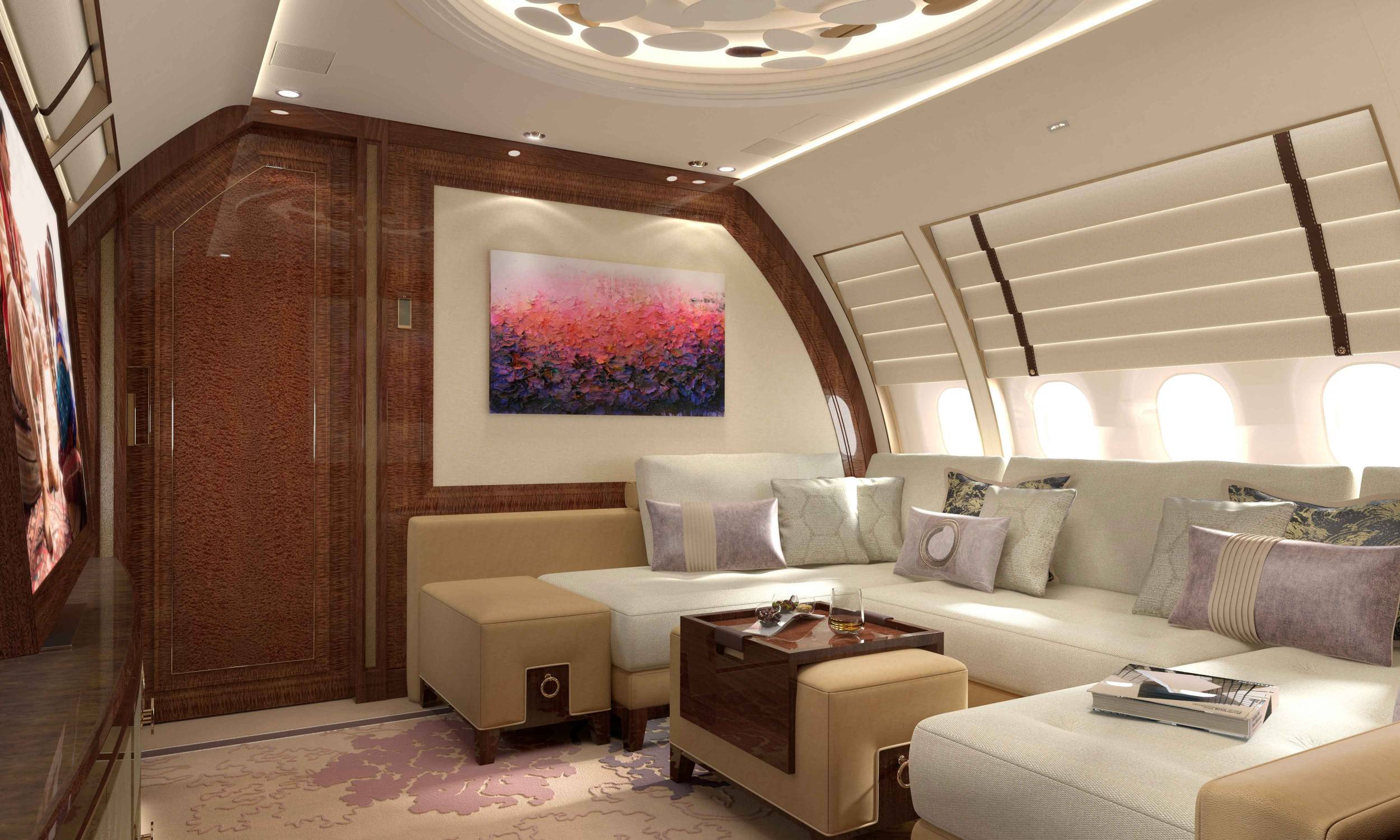
Comlux Completion’s U.S. facility is full with both ACJ and BBJ completions, having delivered its first ACJ320neo interior last September and its second this spring. A third neo, for a DC Aviation Group customer, is slated for delivery this fall, and a fourth, inducted in April 2021, is also in completion. The recently delivered neo’s interior features many intricate, detailed deco panels with complex, compound shapes, creating a layered look on cabin bulkheads. The third neo cabin is being created “in collaboration with a premier luxury brand, something new and novel for us,” said Daron Dryer, CEO of the Indianapolis, Indiana facility, a division of Swiss executive airliner services specialist Comlux Group.
Its first BBJ Max 8, in-hangar since the 2019 Max grounding, is also undergoing cabin outfitting, among other Boeing projects, and the level of requests for completion proposals for both OEMs’ platforms is “good,” Dryer said.
Comlux is also developing a proprietary, decentralized/decoupled IFE/CMS system that can be controlled and upgraded “from a zonal perspective” and will help future-proof the system, Dryer said.
Comlux is also partnering with ACJ to outfit the cabins of the first 15 of the European consortium’s ACJ TwoTwenty, newest member of the ACJ fleet. Customers can choose from a selection of predefined configuration options, providing “a unique interior within a minimized time frame,” Dryer said. The interiors feature spacious, open designs using materials and textiles such as natural fibers colored without chemical dyes, with options including veneers and other components created with sustainable processes, while maintaining the comfort, look, and feel of high-end luxury interiors. The baseline virtual reality model is now complete, enabling viewers to walk through the cabin virtually to get an idea of its space and some available configurations.
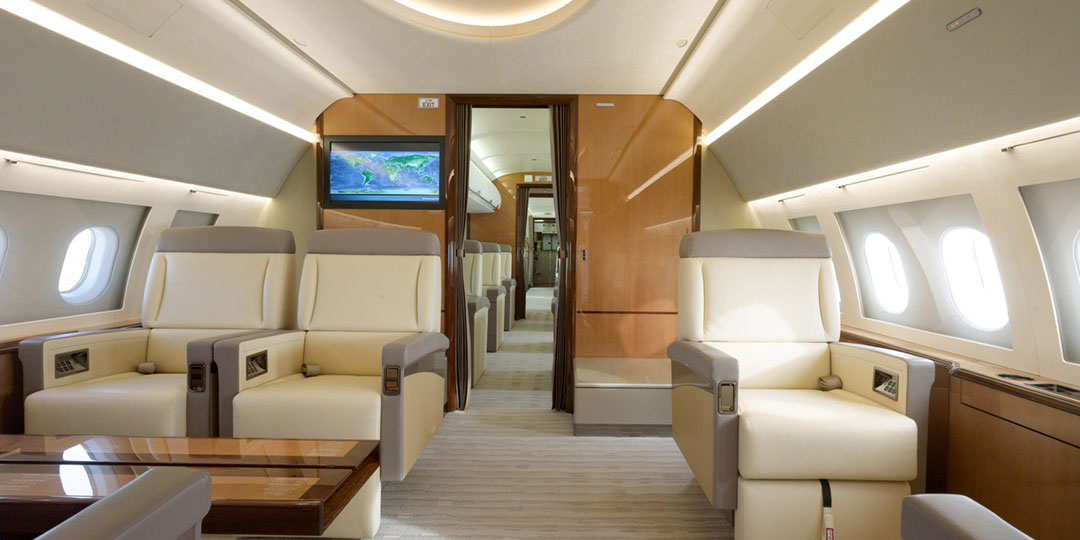
After delivering its first ACJ320neo at the end of 2020, AMAC Aerospace delivered its second—featuring a corporate VIP interior—in July. An ACJ 319 with a fully customized head-of-state cabin is scheduled for customer delivery by year end. Concurrently, two BBJ747-8s are in house, one undergoing reconversion. In the first, Honeywell JetWave Ka-band satcom connectivity and updated IFE installations among other systems upgrades are calendared for 2022’s first quarter. The second Boeing jumbo is getting a Ku-band satcom along with other modifications. AMAC expects induction of the first BBJ Max 9—for a head-of-state cabin completion—in September.
Eric Hoegen, director of completion sales and key account management, said that “owners who did not cancel their orders are now coming back again, asking about completions for their green aircraft.” He expects the Max’s return to service to spark an uptick in completion activity industry wide.
Basel-based AMAC also expects an increase in refurbishments coming from preowned transactions, “purely through the amount of pre-purchase inspections that we are carrying out.”
The recent opening of Hangar Five, dedicated to large-cabin business jets, is also leading to a spike in refurbishment activity at AMAC.
MRO and Refurbishment Facilities
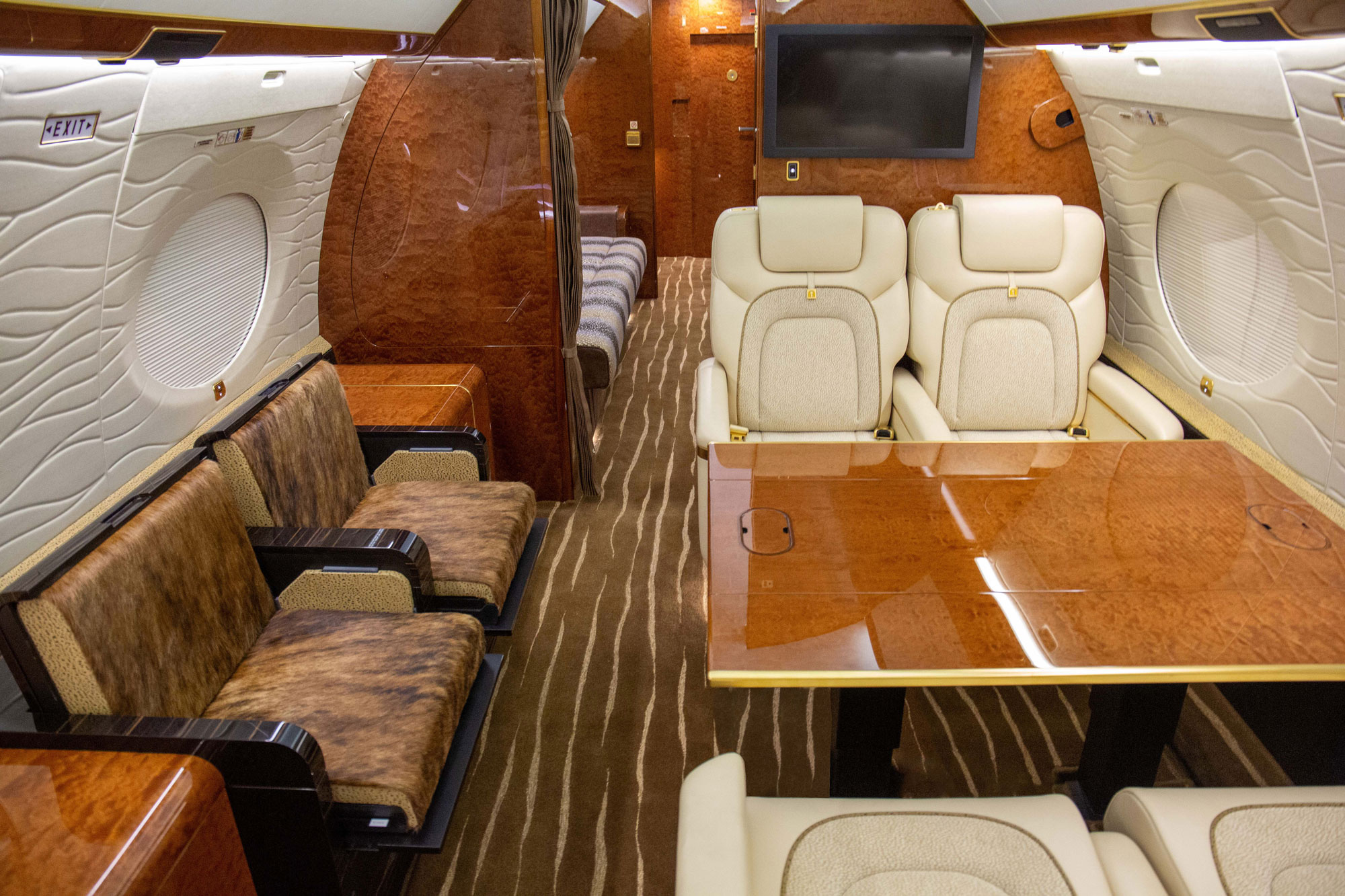
Constant Aviation’s MRO facilities at Cleveland, Ohio, and Orlando Sanford International Airport in Florida both have interiors centers and both are undergoing major upgrades as refurbishments continue. Constant’s Sanford team recently completed total refurbishment on a Challenger 604 that included “enhanced functionality with just the right amount of modern touches,” said senior design manager Lauren Brocklehurst, including a custom-design divan inspired by a “Soho couch” and new livery. A Global Express is undergoing a similar transformation now at Sanford. The Cleveland facility this year completely refurbed a Gulfstream G650 with a three-cabin layout, adding an angled entertainment unit in the aft cabin; Kalogridis Deconnel on the window lines for added texture and movement; Cambria countertops by Scott Group Custom Carpet; and fabric inserts on leather seats for comfort on long-range trips.

Duncan Aviation has developed and introduced several new cabin resurfacing processes, offering customers lower costs and downtime and more design possibilities than traditional refinishing treatments like re-veneering. With lockdowns eased, owners “want to be flying, so we need to reduce down times as much as we can,” said Nate Klenke, Duncan sales manager, modifications.
In June, Duncan used hydrodipping, a process adapted from the automotive design world, to refinish the cabin of a Citation XLS in a 10-day turn. Hydrodipping involves removing an interior component and dipping it in a tank by a mechanical arm, where a hydrographic image—ranging from fine wood grain to a fanciful scene, or any image desired—is applied to the surface.
The Citation’s lavatory cabinet, vanity, aft dividers, pocket doors, drink rails, tables, left-hand forward galley, and right-hand forward entertainment cabinet were resurfaced with a design similar to a flat-cut walnut veneer over a grey background. New table inserts and minor leather work were also accomplished.
The Lincoln, Nebraska-based MRO recently used vinyl wrap, another alternative finish to veneer, in refurbishing cabinets on a Challenger 300, Klenke said. A laminate attached to a phenolic backing, the vinyl is wrapped onto cabinets and a finish is then applied. Sublimation, another refinishing process, allows creating finished interior surfaces on complex shapes, including window and cabinet panels. Sublimation involves heating a covering material and vacuuming it down onto the panel or a form. Duncan recently acquired a large thermal vacuum for applying sublimation in interior refurbishments.
Meanwhile, in June Duncan delivered a refurbished Falcon 2000 EX EASy and is currently refurbishing a G550.
Klenke sees future demand for refurbishments in current trends, noting that “people are moving toward having a management company or a fleet operator manage their airplane,” while these same operators “are now starting to brand their fleets” for the charter market. For these operators, “whether people will charter it depends on the age of the airplane and how it’s equipped,” he said, “And they won’t charter unless you have a well-kept interior or a relatively newly refurbished one.”
In a heads-up to all refurbishment prospects, Klenke warned about supply chain issues. “We’re seeing fabrics, leathers, mechanical parts, electrical parts, all becoming more difficult to get, and lead times extending. The planning process has to be way out in front.”
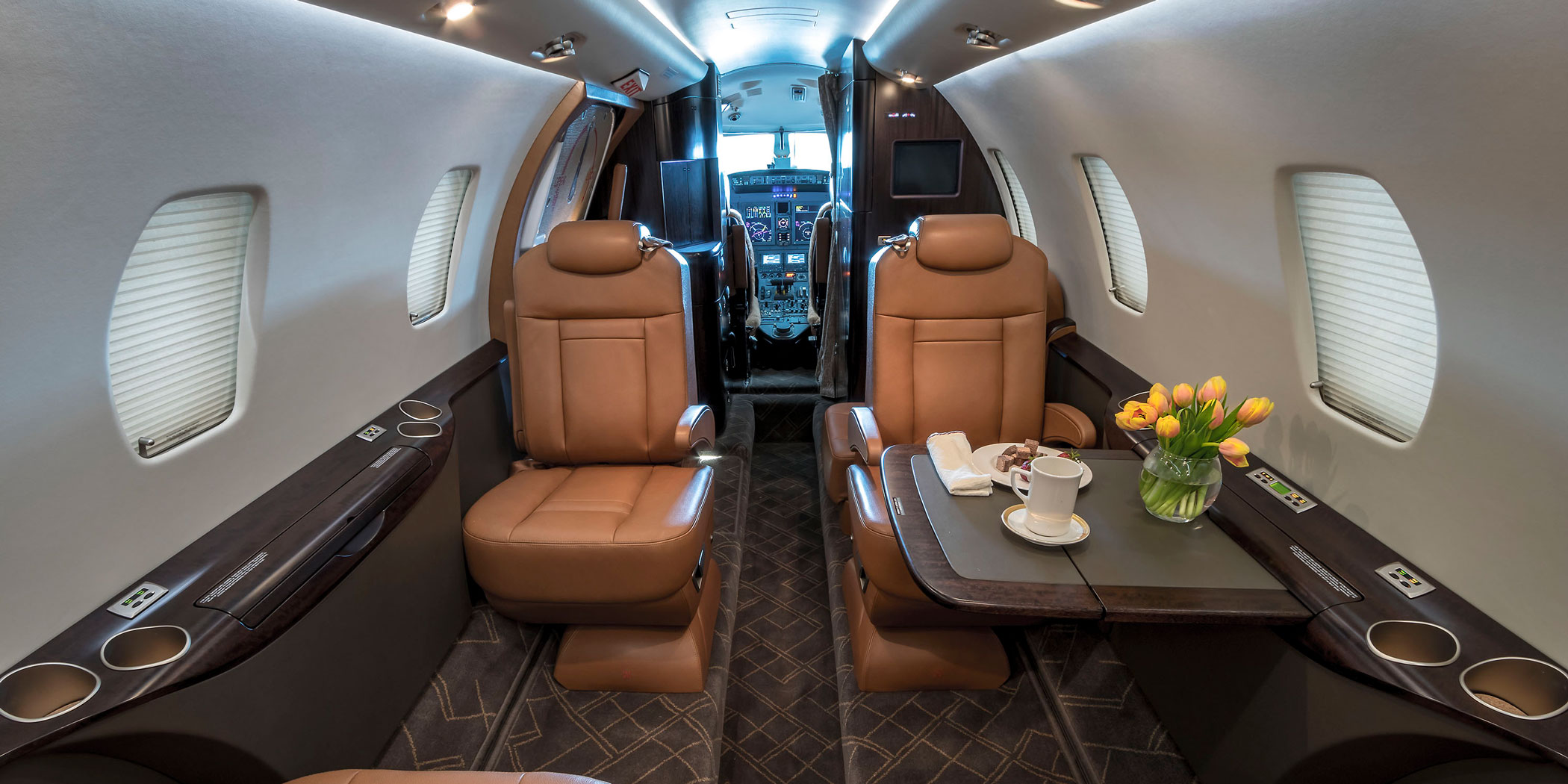
The dearth of new aircraft deliveries helped drive refurbishments at West Star Aviation. “Some clients are not willing to wait for new aircraft manufacturing, so they are buying used and refurbishing them to their own liking,” said Debi Cunningham, vice-president of marketing at the Alton, Illinois-based MRO. West Star expects the trend to continue.
The recent trend has been that interior designs are mission-defined. For private family use, clients like “seating that will accommodate the entire family, with areas for sleep and comfort,” Cunningham said. For corporate customers, “office in the sky connectivity…along with interior materials that are easy to clean and maintain” are preferred.
Among design trends, color coordination between the aircraft’s interior and exterior “has totally gone out,” Cunningham said, with customers treating inside and outside as “two different canvases to showcase their tastes.” Meanwhile, the current color preference for earth tones has yet to shift back to the jewel tone palette with which it historically alternates. Soft grays and whites and black have become more popular over the last few years, she said, but color choices overall are literally “all over the spectrum, making everyone’s aircraft completely customizable to their tastes.”
West Star used Zoom and Facetime calling with clients to keep projects moving forward during the lockdown, but now “customers are back in the design center and in-house, and in-person meetings are back, for which the interior design of an aircraft is still the best way,” Cunningham said.
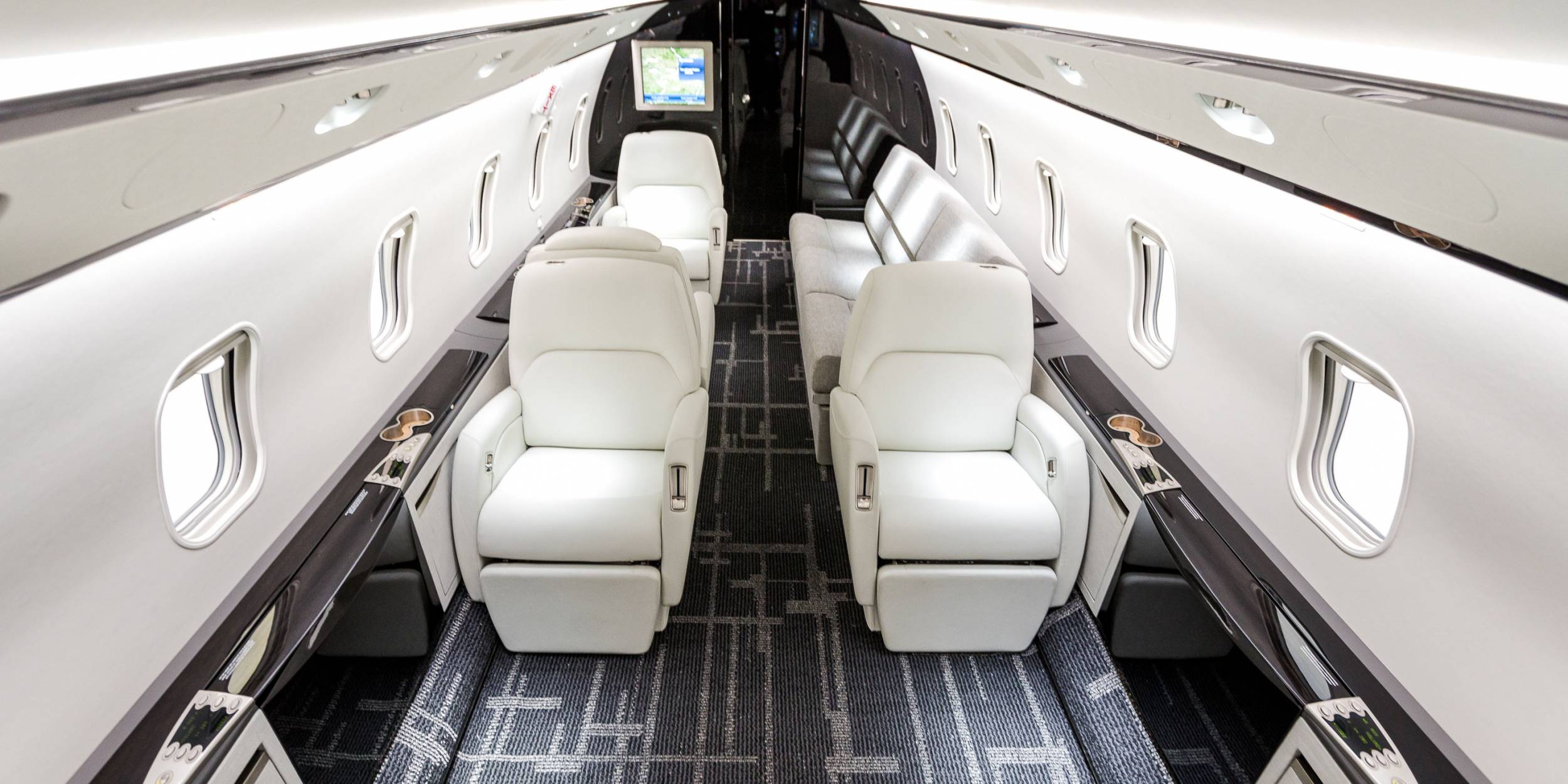
Elliott Aviation, focused on aircraft from King Airs to midsize jets, is seeing strong demand for personalization in its refurbishment projects, with owners “really getting involved in the design process,” said Megan Welch, director of interior sales and design. The style trend is contemporary. “Contrast is a huge design element,” she said. “Less is more; strong contrasts—darker cabinets, lighter seats; and good carpets pulling two tones together—the modern look.”
Custom seat design is part of the trend, including two-tone designs and styled leather inserts popular in high end autos. LED color lighting, Welch said, tunable to “complement what your flight mission is: entertainment, reading, or rest,” and for luxury convenience touches like illuminating or backlighting cup holders, is also very popular. Sister company Elliott Technologies offers its proprietary Prism LED cabin lighting through some 20 dealers nationwide.
Galley upgrades are likewise in high demand. Whatever the anticipated project, the Moline, Illinois-headquartered MRO makes sure all options “from the cockpit, through the cabin, to the lavs,” are presented to and discussed with clients.
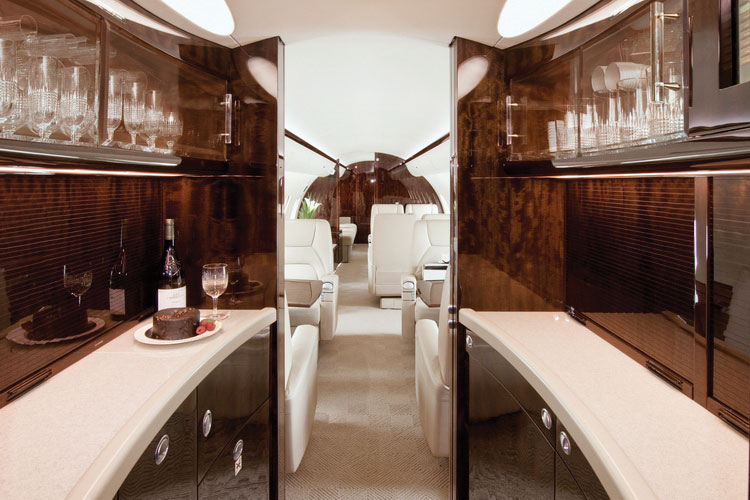
The owners of all the aircraft coming to Innotech Execaire, which specializes in Bombardier platforms, for heavy checks in the past year “want wood veneers and paint touched up and new carpets when they arrive,” said Logan Brown, sales director at the Montreal-based company. “We can give them a quote on how much to touch up the entrance area, the first wood where the hands go, or for a full soft goods update.”
IFE and cabin connectivity refreshes, 4K monitor installations, and upgrades to cabin management systems, are also popular. (Innotech is an authorized Honeywell avionics VAR as well as Cessna Citation service center.)
Formerly a major completion contractor for Bombardier Globals and Challengers, Innotech sold the airframer its completion business a decade ago but sees opportunity in the aircraft it once finished.
“We still have the capability to do a full completion, the staff’s tribal knowledge is still there,” said Brown. “We’ve targeted a lot of aircraft we completed ten years ago, to see about providing complete refurbishment and paint services.”
Innotech is also collaborating with parent company Innotech Execaire Aviation Group, which provides production support services, to bring OEM quality to aftermarket refurbishments.
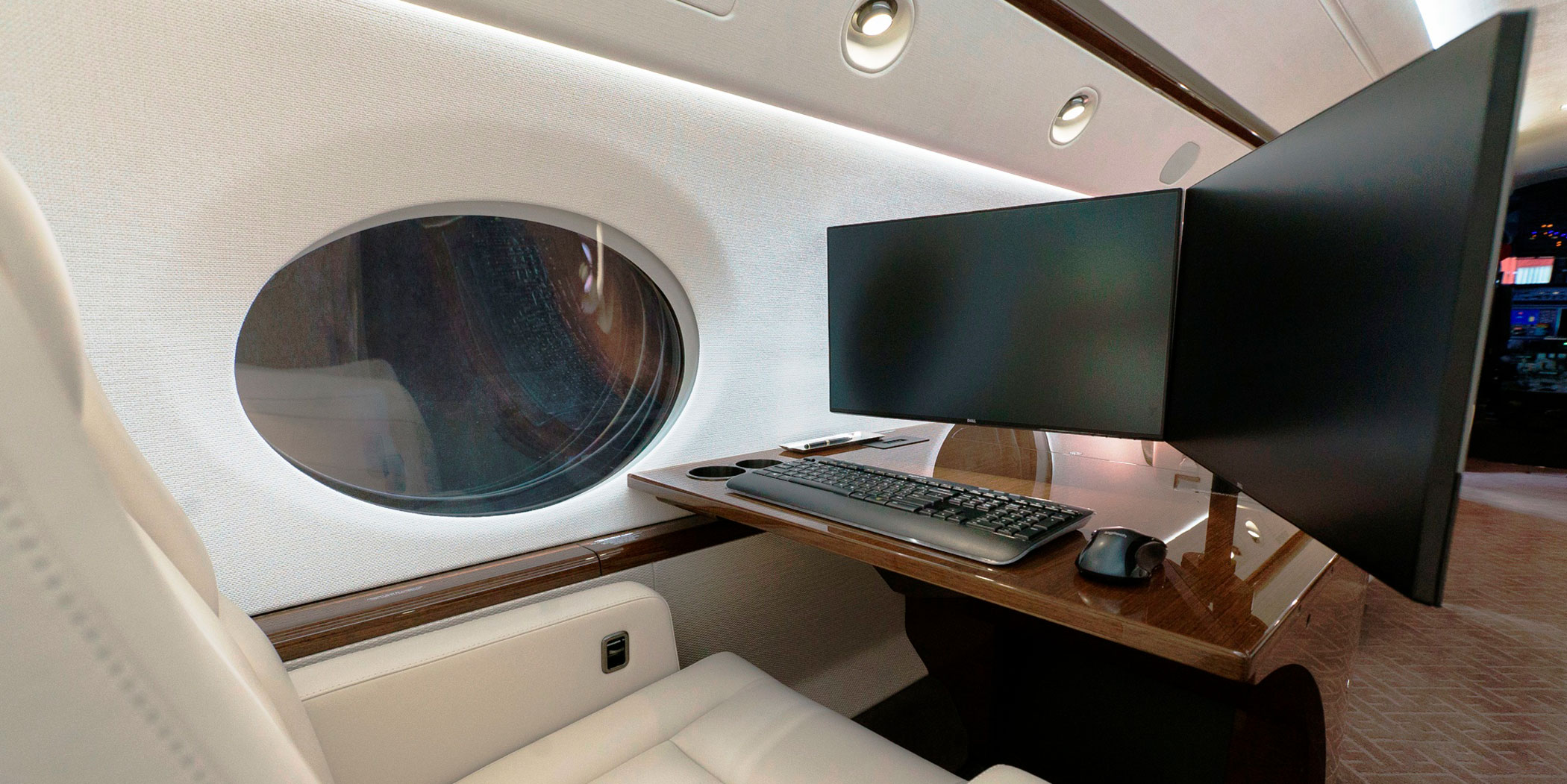
Stevens Aerospace and Defense Systems refurbished a Gulfstream IV this year for a first time owner who “wanted a G450 look,” said interior manager Tim Briscoe, the update including a cabin reconfiguration, new cabinetry, total soft goods replacement, and new LED lighting and Alto sound systems. Red leather accents on the white leather seats are complemented by a horizontal red stripe running along the cabin sidewalls. A “huge” desk formerly on the right side of the forward cabin (“Something I’ve never seen in an airplane,” Briscoe said); and the wardrobe, and uncertified bed in the aft section, have been removed. In their place, the new interior features club seating; a credenza with a flip up monitor; and a divan certified for taxi, takeoff, and landing, respectively. Bulkheads were removed to create a larger interior space. Such reconfiguration requests are common today said Briscoe, especially for Gulfstreams: “They want more passengers on them, for both Part 91 and Part 135” operations. The refurbished vintage 2000 GIV also got new paint and had its engines overhauled.
Stevens is also busy with full interior upgrades on executive UC-12s (King Air 200s) and UC-35s (Citation 550s) for the U.S. military. (One dozen King Airs and two Citations this year). The Nashville, Tennessee-based MRO has been refurbishing executive lift for the military since 2005, but “this is the first time we’ve seen an onslaught like this,” Briscoe said.
The interiors of each model will be done in identical style and materials, and both have seven-passenger configurations.
International Jet Interiors (IJI) of Long Island, New York, and avionics and maintenance services provider Pro Star Aviation of New Hampshire often partner on interior projects. Known for creating bespoke interior designs that nonetheless reflect clients’ unique sensibilities, the pair were tapped in April by PLBY Group—the former Playboy Enterprises—to design and install the interior for a new iteration of the Big Bunny, the late Hugh Hefner’s private jet. Reimagined this time within a Bombardier Global Express, the partner companies are “contractually obligated not to disclose the details” of the interior design, according to IJI president Eric Roth, but “expect this to be a very special aircraft,” he said.
Like its predecessor, the new Big Bunny exterior will be solid black and feature the company’s rabbit-in-a-bow-tie logo on the vertical stabilizer, and the aircraft will be used for brand marketing and promotions.
Approximately 85 percent of IJI’s clientele are ultra high net worth individuals or private business owners, Roth said, often with ambitious interior ideas, “whereas the average corporate flight department simply wants the aircraft to look new and pristine” after refurbishment. If clients plan to make their aircraft available for charter, IJI can modify the interior elements accordingly, and “identify materials that will please their aesthetic taste, yet hold up well over time and the amount of varied usage,” he said.

Interiors work on Bombardier Globals has kept Canada’s Flying Colours busy over the past year, said executive vice-president Eric Gillespie “Connectivity and avionics are a real priority for customers now,” most recently “midsize jet [owners] requesting Ka-band [satcom] installations.” Flying Colours recently installed one aboard a Challenger 604, the first Challenger so equipped.
Private owners are also expressing more interest in multi-purpose interiors, such as a medevac combined with VIP configuration, Gillespie said. Corporate owners show growing interest in shuttle interior options to fill gaps left by reduced airline schedules.
Air purification “has become part of every conversation” about refurbishments, he added, and the MRO has signed an agreement with Aviation Clean Air to install its ionization system. Meanwhile, requests for decorative items—soft cushions, vases, and the like—have declined. “Whether this is a result of Covid or of a design trend is uncertain,” he said.
The Flying Colours Singapore operation in the Bombardier facility located at Seletar Airport completed two total refurbishments in the past 12 months, helping support owners in the Asia- Pacific region who have limited interior and maintenance options. Facility expansion, to include a paint shop, remains underway.
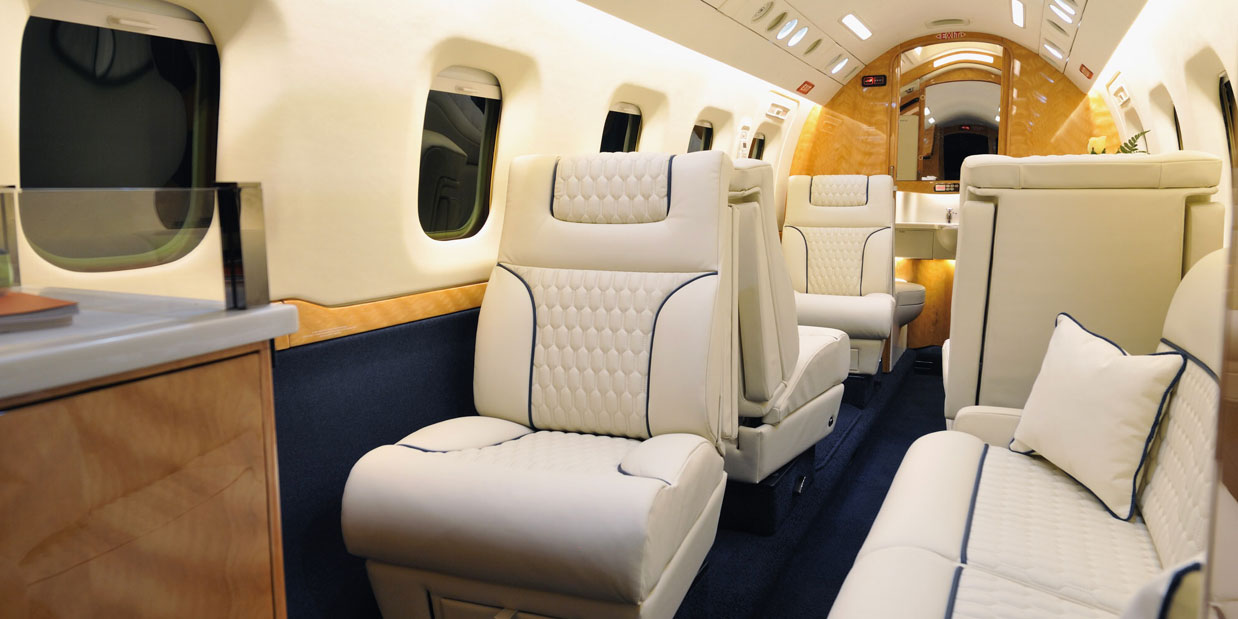
Global Aircraft Interiors (GAI) in Long Island, New York, has seen growing refurbishment activity from former charter customers who have moved to full ownership in response to the pandemic and want to ensure their jets are charter-ready. “The charter market has radically changed,” said president Robert Roth. “There are a lot more charter aircraft, and people have to step up [on outfitting and appearance] and explain what separates theirs versus somebody else’s.” GAI recently outfitted a Falcon 50 with new carpeting and seats for a new, first time owner.
Refurb customers also want interiors “that can be cleaned easily and effectively, or with anti-microbial and mold-resistant materials,” Roth said.
A full refurb on a Falcon 900 and a flooring refurbishment on a Challenger 601 are currently underway. The old vinyl flooring in the entryway and lav on the Challenger is being replaced with woven vinyl, a new option that provides more design options—and a less sterile look—than traditional vinyl flooring for high--traffic cabin areas.
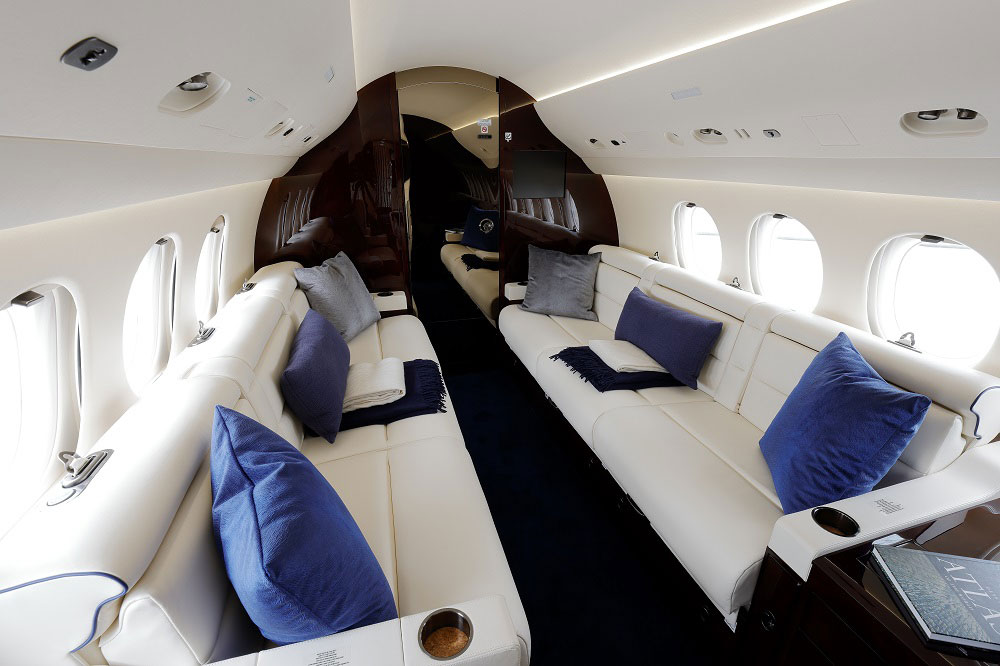
London-based interiors and paint specialist RAS Group was acquired in March by Lithuania’s Jet MS, a division of Avia Solutions Group, a global aerospace company headquartered in Cyprus. In the upgrades arena, RAS completed in June a total cabin refurbishment on a Falcon 7X at its Biggin Hill facility. The interior features high-gloss dark-grained wood cabinetry and high-quality white leather seats.
Interiors and Cabin Component Specialists
High-end aircraft interiors component specialist F/List added this year a pair of cabin surfaces offerings, the latest in the ongoing expansion of its product portfolio: Syntec flooring, a carpet alternative for high-traffic areas; and the Illuminated Surface System.
Syntec flooring consists of individually pre-manufactured tiles, fixed to the aircraft floors by a newly developed mounting system. Installation of its first two Syntec systems—in the entryways of two Pilatus PC24 twinjets—have been completed. The first was done as Pilatus’s U.S. facility in Broomfield, Colorado, and the second at the Pilatus headquarters in Stans, Switzerland.
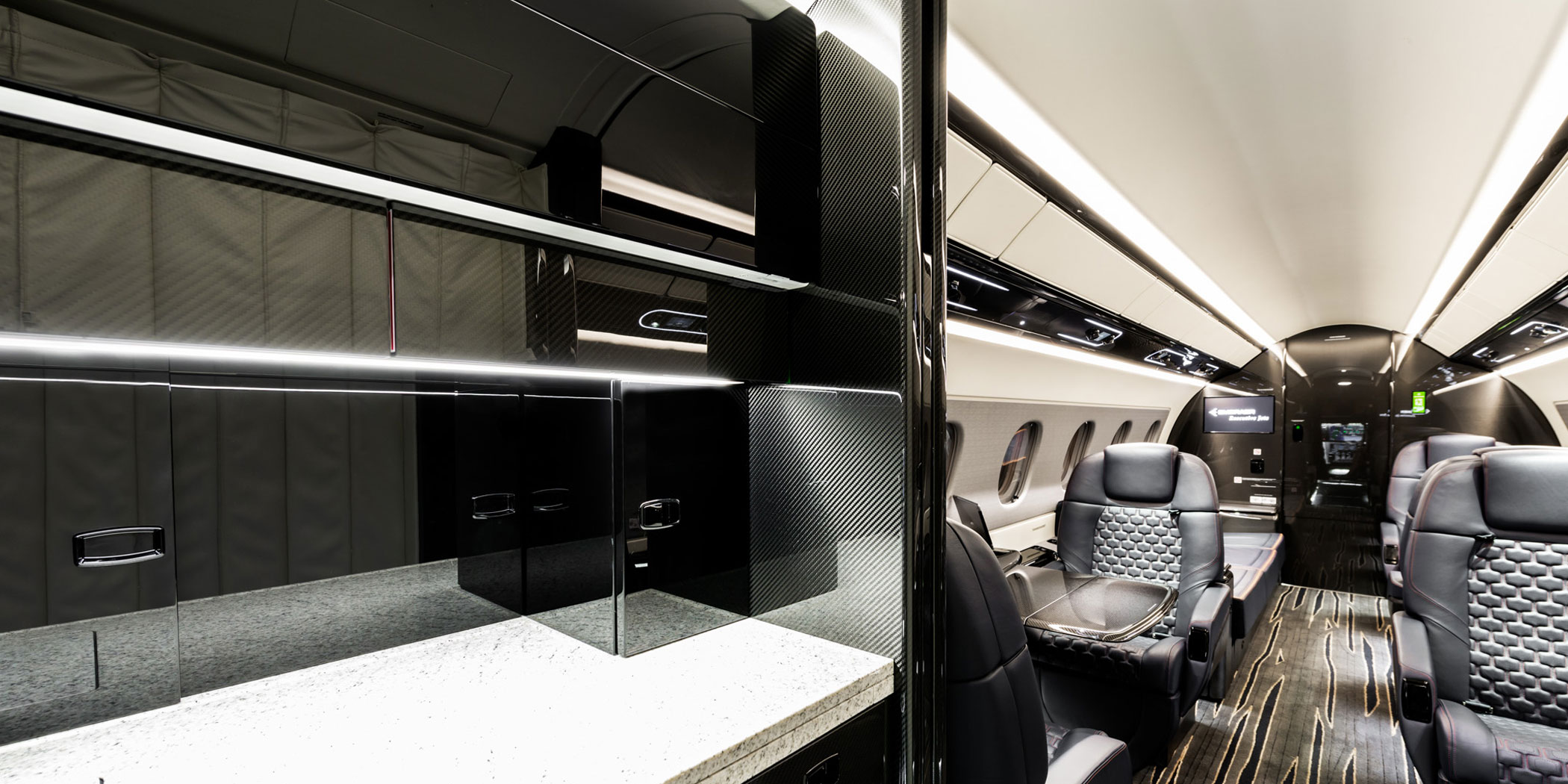
F/List’s new Illuminated Surface System brings controllable LED backlighting to the surfaces of natural materials such as thin stone, opening a host of design and illumination applications.
F/List has placed a priority on integrating sustainable, ecofriendly materials into its collection of surface options, such as rattan surface, a palm tree derivative; sustainable upholstery, such as organic--certified leather made from agricultural by-products; and a biodegradable and non-hazardous, non-graining flame--retardant product developed in-house.
Concurrently, the company’s Futurelab incubator is developing a new product portfolio aimed at expanding the potential to create multifunctional spaces in the cabin. In a joint venture collaboration with Hilitech, the companies aim to create interior components offering a 30 percent weight savings over conventional materials.
Orders for products for refurbishment during the pandemic were robust, as many fleet customers used the downtime to refurbish their aircraft. As sales of new aircraft accelerate, supplying interior components to OEMs offers “a high market potential,” the company said.

Hardly a new name in high-end interiors, the family owned Catherineau of France was founded in 1750 and designed its first business aircraft interior in 1960—for the then-in-development Falcon 20. More than 2,500 completions later, Catherineau remains largely “under the radar,” said CEO Anne-Sophie Catherineau, an anonymity the company plans to end. “We were focused on the French markets and we recently decided to open to international markets,” she said.
The company is in contact with business jet manufacturers about potential projects and has done two Global aircraft completions for Bombardier already, Catherineau said.
In addition to luxury interior designs for aircraft, residences, and yachts, Catherineau is known for the precision control mechanisms used in its furniture, with all research, design, and production handled in-house. The company developed the onboard shower introduced on the Falcon 7X and subsequent Falcon models, handling the certification process as well. The onboard beds with tilting mechanisms it makes are approved for use during takeoff and landing.
In addition to VIP interiors for business jets and executive airliners, Catherineau provides the interiors for Daher TBM turboprops, Airbus Corporate Helicopters, and for completion centers.
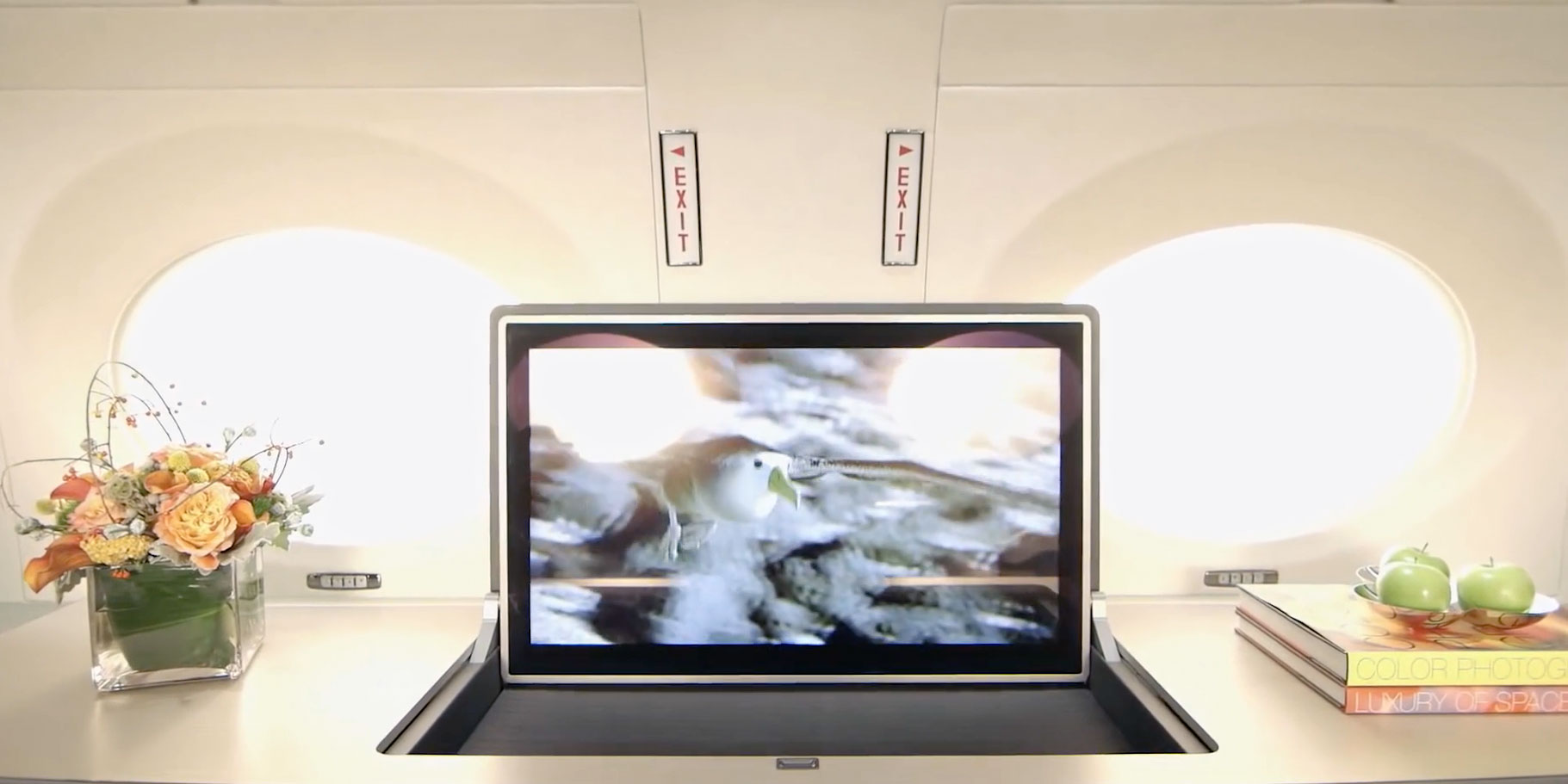
Cabin electronic controls and display technology specialist Rosen Aviation has introduced a line of OLED 4K displays, ranging in size from single-digits to 55 inches and larger, providing a vastly improved viewing experience at half the weight of current-generation cabin displays, according to the company. With power units and other components, Rosen’s 55-inch OLED display is just 26 pounds. Boasting wider viewing angles, higher resolution, and better colors than LED displays, the super-thin OLED panels can also be made in curved formats to conform to a variety of surfaces, opening a host of future applications throughout the cabin.
Created in partnership with LG, Rosen’s 48-inch and 55-inch screens are slated for introduction this summer; the 22-, 27-, and 32-inch displays, using Japan OLED screens, are expected to follow shortly, available to both manufacturers and, soon after, the aftermarket.
Other size screens will be available on demand. The same components are used in all, so weight growth for larger screens is only “incremental,” said Lee Clark, the Eugene, Oregon, company’s senior v-p for strategy.
MSB Design in May debuted its Zero Gravity two-place sideledge table lift system that, when deployed with its four-place hi-lo conference table, can create a six-place setting for onboard dining and meetings. Reflecting “the need for a more flexible table solution in larger-cabin aircraft,” the Zero Gravity system can be used as a two-place table or ottoman, said MSB Group v-p Mario Sevigny. The table surface can be finished with either a traditional wood veneer or carbon-fiber material to complement the black anodized aluminum mechanisms, according to the Montreal-based business aviation engineering firm. MSB expects the Zero Gravity table will be available through Gulfstream by year-end.
OEM Completions & Refurbs
Airbus Corporate Jets (ACJ) introduced a new family member last year: the ACJ TwoTwenty, an executive variant of its A220-100 single-aisle airliner. The jet offers three times the interior space of the largest purpose-built business jets, and a lower price (under about $72 million) and operating costs, according to ACJ. The company calls the category--straddling aircraft an “Xtra Large Bizjet,” president Benoit Defforge said at its virtual introduction.
The cabin features six VIP living areas for up to 19 passengers and a comfortable 6,000-foot maximum cabin altitude, with legs long enough (5,650-nm range) to link London and Los Angeles; Moscow and Jakarta; Tokyo and Dubai; or Beijing and Melbourne.
ACJ is partnering with Swiss bizliner services specialist Comlux Group for the first 15 of the ACJ TwoTwentys, with the latter handling interior design and engineering work and cabin installations. Work will be performed at Comlux Completion, the Group’s Indianapolis, Indiana completions and refurb center.
Six orders are in hand, including two from Comlux Group, which will make its TwoTwentys available for charter and sale through Comlux Aviation, its Malta-based operations division. ACJ expects to deliver the first green TwoTwenty airframe, now under assembly in Mirabel, Canada, to Comlux early next year, with service entry slated for early 2023.
ACJ has developed an aircraft configurator application to help customers select interior layouts and styling. This year, ACJ partnered with Latécoère Interconnection Systems to develop by year end an ACJ Smart LiFi (light fidelity) monitor for new and retrofit cabin outfitting.
Bombardier introduced a certified preowned aircraft program, with the Canadian manufacturer sourcing, inspecting, and updating the airframe, and delivering a “like-new” aircraft with a one-year warranty. The company is working on its fifth certified preowned jet now, said Chris Debergh, vice-president, OEM parts and services. The buyers tend to be new owners, and the market for such aircraft “has been pretty healthy throughout Covid,” he said.
Bombardier also launched a cabin upgrade for the Challenger 350 super-mid, including new cabin design options and Viasat Ka-band satcom connectivity. The upgrade is available for new and in--service Challenger 350s, as well as in-service Challenger 300-series. The CL350 is also getting a refreshed user interface for the cabin management system, taking inspiration from the award-winning design of Bombardier’s flagship Global 7500 CMS.
Boeing Business Jets wasn’t able to provide information or comment on any BBJ programs for this year’s report. However, a company spokesman told AIN the company had sold a BBJ, type unspecified, to the Polish government this year. A representative for the Polish government declined to comment on plans for the BBJ’s completion.
Gulfstream Aerospace has enhanced its redesign program to offer multiple options intended to suit a wide range of Gulfstream owner needs and tight timelines, promising the refurbishment turnaround in as few as 30 business days at a Gulfstream facility.
“From a refresh to a floorplan reconfiguration, our team can bring any vision to reality,” said Gulfstream Customer Support president Derek Zimmerman.
Three basic redesign programs are available. The Refresh provides recovered seats as well as upper and lower sidewalls, fresh carpeting, and exterior paint in as few as 30 working days. The Premium adds new veneers and countertops; and the Custom offers a new floor plan along with all the other upgrades. The work can be performed in tandem with other maintenance services.
Textron Aviation, whose aircraft brands include Beechcraft and Cessna Citation, is offering a new quick-turn option on interior refurbishments from its cabin refresh collection. Available at all Textron Aviation U.S. service centers, customers can select one of four unique interior schemes, personalized to their tastes, styles, and brand, and a Textron Aviation design team will create and install an aircraft interior using high-quality, in-stock inventory, within a limited down time.
Textron Aviation can also provide customers with factory-new interiors, as well as have the exterior repainted or other available upgrade installed, in conjunction with scheduled maintenance or modification at any of its U.S. service centers.
Early next year, Beechcraft will offer a new selection of cabin fabrics and color schemes and additional amenities for the King Air 260 twin turboprop, introduced in December. Improvements include a modernized refreshment center, multiple USB charging ports, and LED lighting, including in cupholders and through pinholes along the lower sidewalls. Four standard color palettes—alpaca, buttercream, new pewter, and latte—will be available, along with an optional premium “Lava Saddle” interior. Textron is also committed to offering sustainable interior materials, such as green textiles, carpets, and wood veneers, the company said.
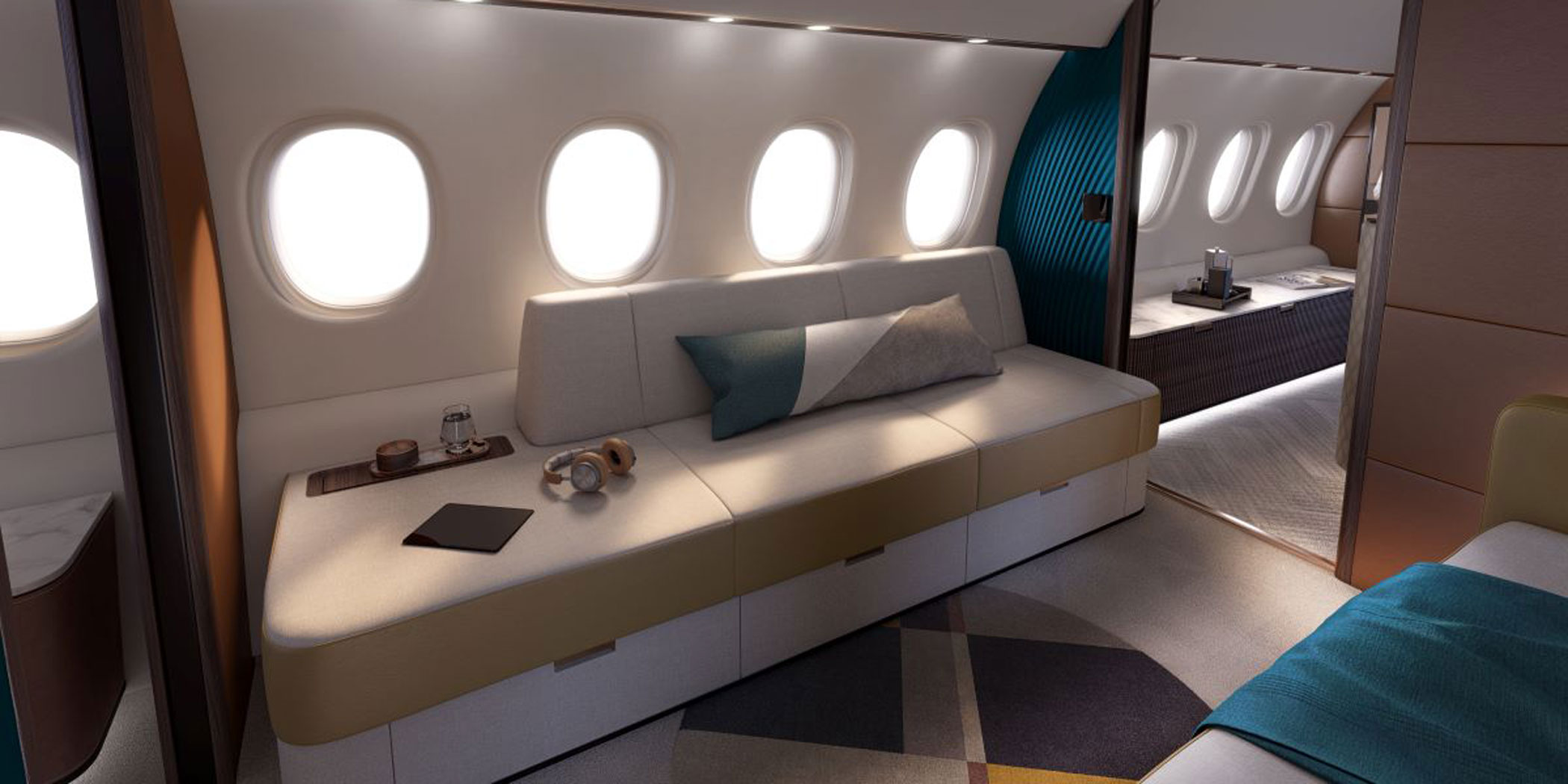
Dassault Aviation categorizes the Falcon 6X, scheduled to enter service in 2022, as an “ultra-widebody.” It features the largest cabin cross section of any business jet—8 feet 6 inches wide, and 6 feet 6 inches tall—while retaining the Falcon’s famous short field and hot/high operational agility. The three-zone cabin has multiple configuration options, and 30 extra-large windows along with business aviation’s first “Skylight,” positioned over the entryway.
The Falcon 10X, introduced in May and scheduled for service entry in 2025, will have a cabin 9 feet 1 inch wide, and 6 feet 8 inches high, with 38 large windows. Dassault designers are developing configurations with up to four lounges that can include a full bathroom with shower, private cinema, and VIP master suite with its own bathroom and an optional 60-inch queen-sized bed.
Based on customer feedback from more than 50,000 hours of fleet operations, Pilatus Aircraft in July added a host of new features to the PC-24 twinjet. New lie-flat seats in the cabin provide more comfort, more intuitive controls, and lighter weight, in addition to quick-release mechanisms that facilitate fast seating configuration changes. In lieu of the standard forward left-hand coat closet, operators may now opt for a galley with a microwave oven, coffee/espresso maker, work surface, ice storage, and/or capacity for standard catering units.
Many of the new features can be retrofitted on in-service airplanes, the Swiss aircraft manufacturer said.
Aiming for sustainability in its aircraft, Embraer Executive Jets’ cabin concept for its flagship Praetor line (500/600) features “a multidimensional sustainable interior that merges the digital future with sustainable resources,” according to the Brazilian airframer. That concept cabin includes cabinetry and tabletop surfaces made from palm tree wood sourced from commercial cultivation, rather than using wild heart of palm fruit, and luxurious cabinetry and tabletop surfaces made from recycled metals. The recycled surfaces are inspired by Mokume-gane, a Japanese technique that uses mixed-metal laminates from discarded scraps to forge new patterns and exquisite works of art.